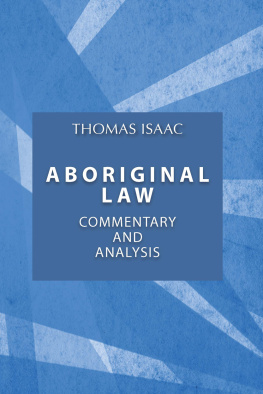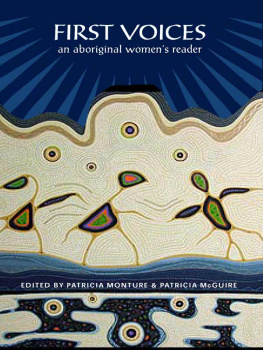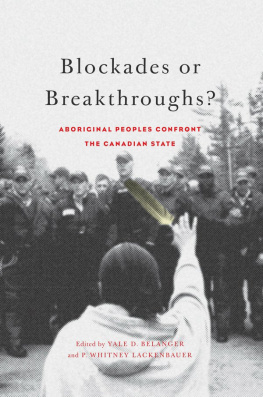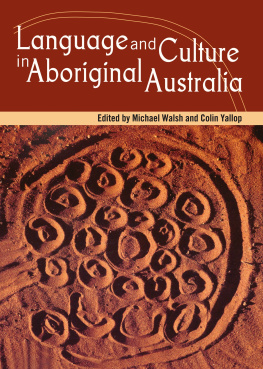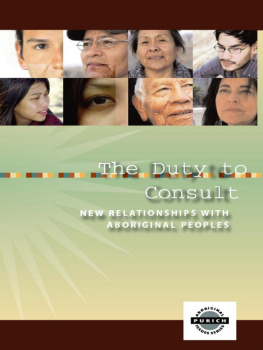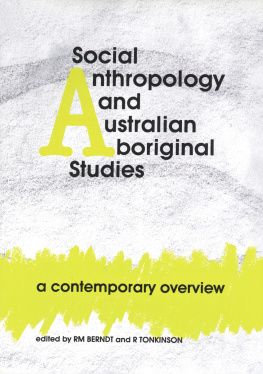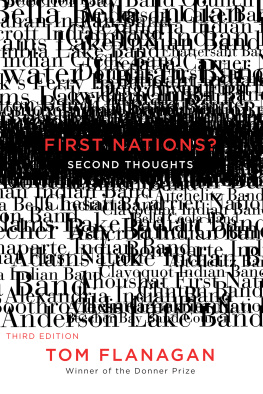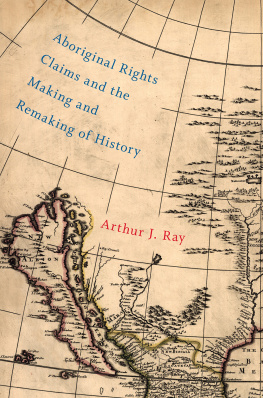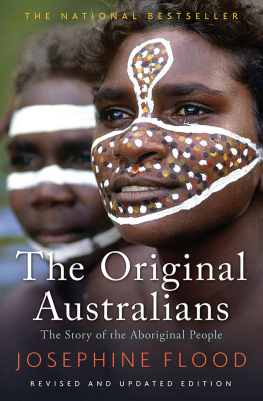Aboriginal Law
Aboriginal Law
Commentary and Analysis
Thomas Isaac
B.A., M.A., LL.B., LL.M.
of the Bars of
Alberta, British Columbia,
Northwest Territories, Nunavut, and Yukon

Copyright 2012 Thomas Isaac
All rights reserved. No part of this publication may be reproduced or transmitted in any form or by any means without permission in writing from the publisher, except by a reviewer who may quote brief passages in a review, or in the case of photocopying or other reprographic copying, a license from ACCESS (Canadian Copyright Licensing Agency) in Toronto. All inquiries and orders regarding this publication should be addressed to:
Purich Publishing Ltd.
Box 23032, Market Mall Post Office, Saskatoon, SK, Canada, S7J 5H3
Phone: (306) 373-5311 Fax: (306) 373-5315 Email: purich@sasktel.net
www.purichpublishing.com
Library and Archives Canada Cataloguing in Publication
Isaac, Thomas, 1966-
Aboriginal law : commentary and analysis / Thomas Isaac.
Includes index.
Print ISBN 978-1-895830-62-0
eBook ISBN 978-1895830-651
1. Native peoples Legal status, laws, etc. Canada. I. Title.
KE7709.I823 2012 .710872 C2012-904081-9 KF8205.I823 2012
Edited by Karen Bolstad.
Designed and typeset by Donald Ward.
Cover design by Jamie Olson.
Index by Ursula Acton.
Printed and bound in Canada by Houghton Boston Printers and Lithographers, Saskatoon.
eBook development: WildElement.ca
Purich Publishing gratefully acknowledges the assistance of the Government of Canada through the Canada Book Fund, and the Creative Industry Growth and Sustainability Program made possible through funding provided to the Saskatchewan Arts Board by the Government of Saskatchewan through the Ministry of Tourism, Parks, Culture and Sport for its publishing program.
Printed on 100 percent post-consumer, recycled, ancient-forest-friendly paper.
In Memory Of
Barbara J. Isaac
1943 2006
Contents
Chapter Four: Modern Treaties
and Land Claims Agreements
Chapter Six: Indian Reserve Land
and Related Tax Matters
Chapter Eight: The Crowns Duty to Consult
Aboriginal Peoples
Preface
Since the 3 rd edition of this book in 2004, the Crowns duty to consult Aboriginal peoples has become the dominant issue in Aboriginal law. While the definition and scope of Aboriginal and treaty rights continue to develop, the application of the Crowns duty to consult Aboriginal peoples has taken a predominant role in this area both legally and practically for most entities doing business in Canada.
Governments across Canada have been challenged in implementing the Crowns duty to consult and putting into place legal and regulatory regimes that are respectful of the principle of the honour of the Crown on the one hand, and provide reasonable stability, predictability, and transparency for government decision-making on the other hand. The tension associated with the reconciliation of these two principles adhering to the requirements of the honour of the Crown and providing regulatory certainty will likely continue to dominate this area of Canadian law for the foreseeable future. Canadas future competitiveness may depend on these issues being addressed and managed by the federal and provincial governments in a comprehensive, consistent, and transparent manner.
Related to this tension associated with the Crowns duty to consult is the Supreme Court of Canadas consistent theme of the need for reconciliation in all of its decisions associated with section 35 of the Constitution Act, 1982 . The Courts emphasis on reconciliation has two components to it: (a) reconciliation between the Crown and Aboriginal peoples and (b) reconciliation by the Crown of Aboriginal interests, with competing societal interests. Reconciliation, like consultation, will be a dominant theme and tension in the future regarding Crown Aboriginal societal relations and legal developments.
While Aboriginal law has rapidly developed over the past 20 years, there remain grey areas that require additional clarification and legal guidance. In many ways, the aspect of Aboriginal law that requires the greatest clarification and leadership, ironically, is not the law itself: it is the need for a comprehensive and long-term public policy approach to Aboriginal legal and related issues from governments across Canada. Unlike most other areas of public policy, Aboriginal issues have a unique constitutional and legal component to them that requires a long-term vision of where Canada wants to be as a country, and in its relationship with Aboriginal peoples and its citizenry generally. Much work needs to be done in this area by all levels of government. These issues do not lend themselves easily to election-cycle decision-making but rather demand a longer-term, strategic approach.
Unlike earlier editions, this edition does not include case law excerpts given the changes in availability of case law via the internet. Even though the phrase First Nation is now frequently used by courts and in legislation, Indian and Indian band are still used in some cases and therefore these terms are still used in parts of this book, particularly in respect of references to the federal Indian Act or in terms of federal jurisdiction under s. 91(24) of the Constitution Act, 1867 .
I would like to acknowledge the work of the lawyers, students, and colleagues at McCarthy Ttrault LLP who assisted in the production of this book; and in particular, Stephanie Axmann and Amber Esplen. Finally, I especially thank Christine, Wyatt, and Elias for all their support and encouragement.
Thomas Isaac
Vancouver, British Columbia
CHAPTER ONE
Aboriginal Rights
1.1 INTRODUCTION
Subsection 35(1) of the Constitution Act, 1982 provides that the existing Aboriginal and treaty rights of the Aboriginal peoples of Canada are hereby recognized and affirmed. Instead, s. 35 has had the effect of dramatically shifting Canadas legal and constitutional regime regarding Aboriginal peoples, how their Aboriginal and treaty rights are to be protected, and the effect of such rights on Canadian society generally.
Section 52 of the Constitution Act, 1982 brought about a fundamental change in the Canadian legal landscape by combining the doctrine of parliamentary sovereignty with constitutional supremacy. Section 52 states:
The Constitution of Canada is the supreme law of Canada, and any law that is inconsistent with the provisions of the Constitution is, to the extent of the inconsistency, of no force or effect.
By virtue of s. 52 of the Constitution Act, 1982 , s. 35 is part of the supreme law of Canada, thereby on its face, superseding federal, provincial, and territorial legislation inconsistent with its provisions:
By virtue of s. 52(1), the Constitution of Canada is superior to all other laws in force in Canada, whatever their origin; federal statutes, provincial statutes, pre-confederation statutes, received statutes, imperial statutes and common law; all of these laws must yield to inconsistent provisions of the Constitution of Canada. Section 52(1) provides an explicit basis for judicial review of legislation in Canada, for, whenever a court finds that a law is inconsistent with the Constitution of Canada, the court must hold that law to be invalid (of no force or effect).
Wit expressed this fundamental shift as follows:
By giving aboriginal rights constitutional status and priority, Parliament and the provinces have sanctioned challenges to social and economical policy objectives embodied in legislation to the extent that aboriginal rights are affirmed. [...] The constitutional recognition afforded by the provision therefore gives a measure of control over government conduct and a strong check on legislative power.

